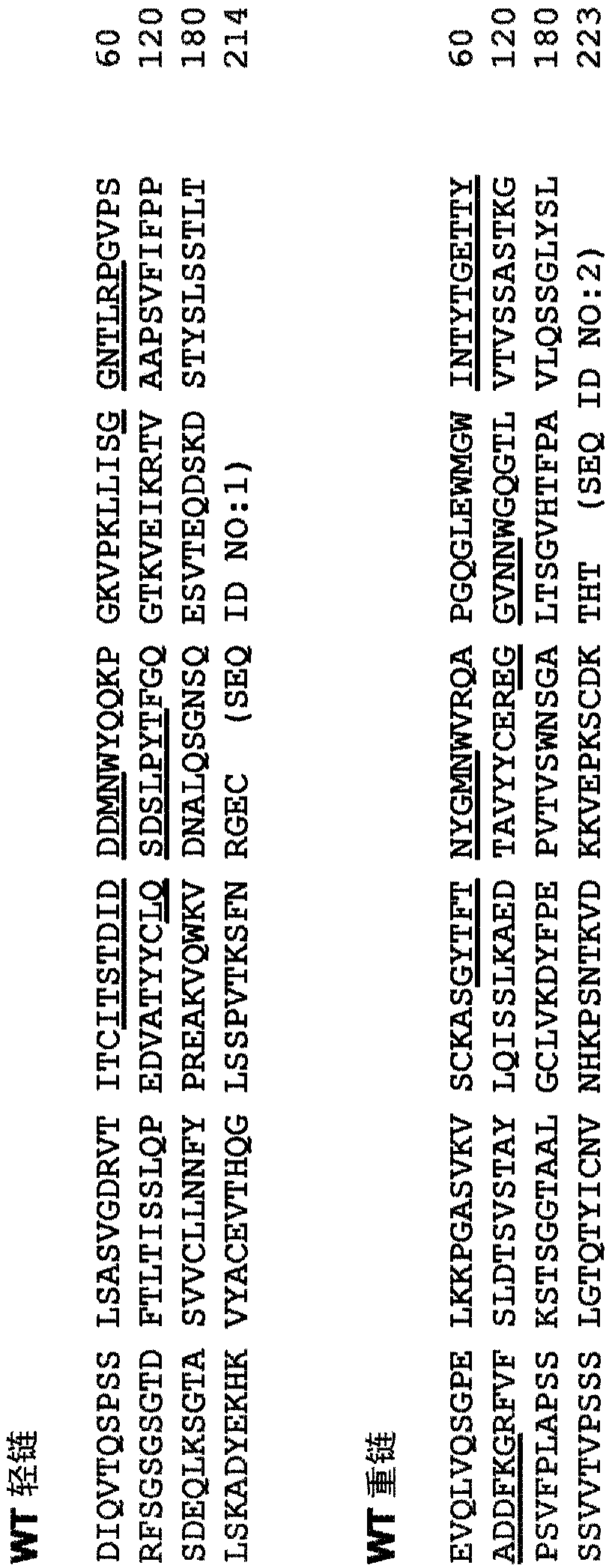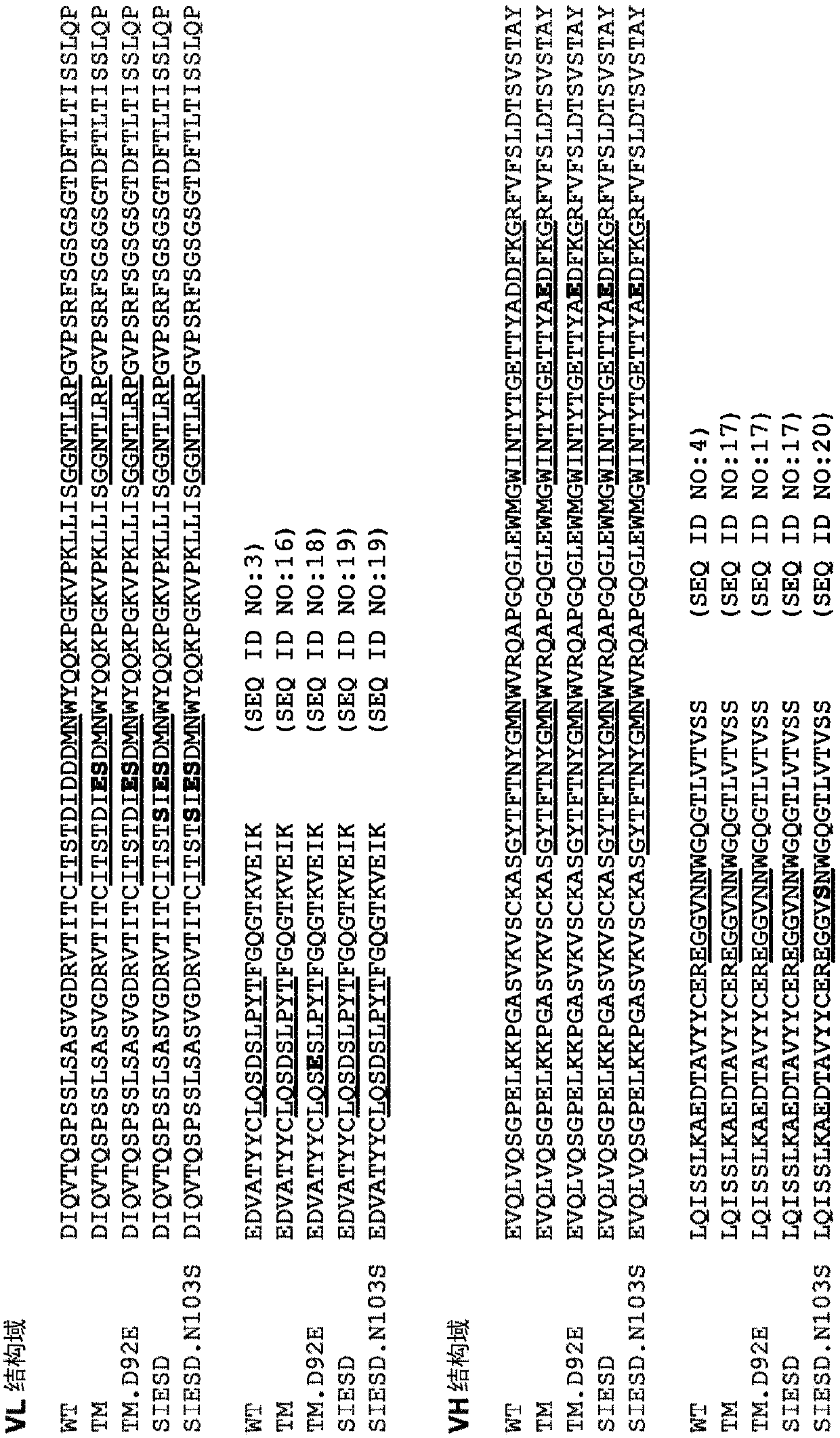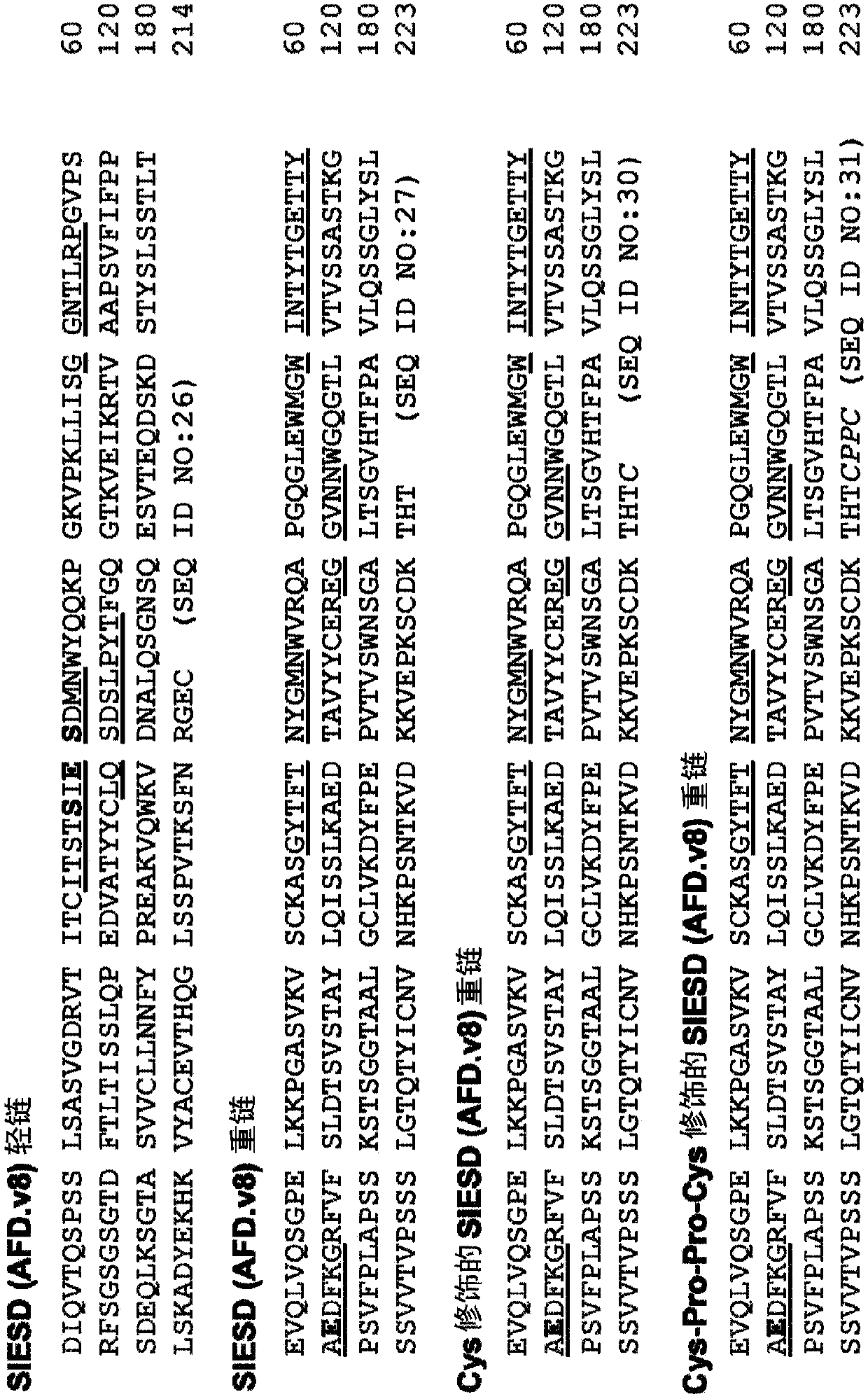Anti-factor D antibody variants and uses thereof
一种抗体、变体的技术,应用在抗‑因子D抗体变体及其用途领域,能够解决延长时间等问题
- Summary
- Abstract
- Description
- Claims
- Application Information
AI Technical Summary
Problems solved by technology
Method used
Image
Examples
Embodiment 1
[0201] Example 1: Generation of Anti-Factor D Antibody Variants
[0202] Lampalizumab, a humanized anti-Factor D Fab fragment that potently inhibits Factor D and the alternative complement pathway by binding to an exosite on Factor D, is currently in clinical development for Therapeutic MAP Gynecologic atrophy (GA), an advanced form of dry AMD. Lampalizumab (FCFD4515S; hereinafter "aFD") is an antibody Fab fragment consisting of a 214-residue light chain (SEQ ID NO: 1 ) and a 223-residue heavy chain (SEQ ID NO: 2).
[0203] Although the results of the phase II human clinical trial in GA indicated that a therapeutic effect was obtained with monthly intravitreal injections of aFD, there was an incentive to use higher drug doses to achieve even better efficacy. At the same time, less frequent dosing would provide improved convenience to patients, with potential benefits of reduced infection rates and increased clinical efficacy, and could aid in the treatment of patients with ea...
Embodiment 2
[0208] Example 2: Biological Activity of Anti-Factor D Antibody Variants
[0209] Promising single and combinatorial mutants were tested for Factor D (fD) binding affinity and ability to inhibit Factor D activity.
[0210] a. Measurement of Factor D binding affinity by surface plasmon resonance (SPR)
[0211] Kinetics and binding constant K of factor D binding to immobilized aFD WT and its variants D through the Surface plasmon resonance (SPR) measurements performed on a T200 instrument. Antibody Fab fragments were immobilized on a Series SCM5 sensor chip using an anti-huFab capture kit (GE healthcare, Cat. No. 28-9583-25) following the manufacturer's described protocol. The kinetics of binding were calculated from sensorgrams recorded for injections of 60 μL aliquots of human factor D solution varying in concentration from 0.39 nM to 25 nM in 2-fold increments. The flow rate was 30 μL / min, the running buffer was HBS-P+, the analysis temperature was 25°C, real-time refer...
Embodiment 3
[0225] Example 3. Anti-Factor D Antibody Variants with Improved Stability
[0226] Based on the above affinity determinations, several single or combined anti-Factor D antibody variants were selected for further stability analysis.
[0227] a.Solubility
[0228] The samples were first tested for solubility at low ionic strength and pH 6. Samples were first prepared in 20 mM His-HCl pH 5 buffer by concentrating to ~100 mg / mL using an Amicon Centriprep YM-10 centrifugal filter unit. These solutions showed no turbidity at pH 5 and low ionic strength when observed with the naked eye. Samples were centrifuged at 14,000 xg for 10 min to pellet any insoluble material. No precipitation was observed, and the protein concentration of the solution was determined by UV absorbance measurement. Samples (-1 mL) were placed in a 10K MWCO Slide-A-Lyzer cassette (Pierce) and dialyzed overnight at 4°C against 1 L of 20 mM His buffer, pH 6, after which turbidity was visually observed. Take p...
PUM
 Login to View More
Login to View More Abstract
Description
Claims
Application Information
 Login to View More
Login to View More - R&D Engineer
- R&D Manager
- IP Professional
- Industry Leading Data Capabilities
- Powerful AI technology
- Patent DNA Extraction
Browse by: Latest US Patents, China's latest patents, Technical Efficacy Thesaurus, Application Domain, Technology Topic, Popular Technical Reports.
© 2024 PatSnap. All rights reserved.Legal|Privacy policy|Modern Slavery Act Transparency Statement|Sitemap|About US| Contact US: help@patsnap.com










